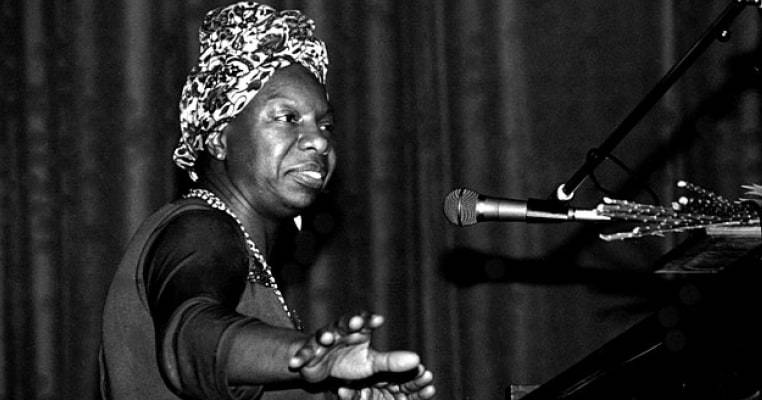Eunice Kathleen Waymon was born in a small mountain town in western North Carolina on February 21, 1933. At the age of 3, she began playing the piano and performing at her church. In 1945, when she was 12, she performed her first classical recital. Full of pride, her parents sat in the front row to watch their daughter. In the middle of her performance, they were forced to move to the black section of the concerns hall. Eunice stopped performing until her parents were permitted to return to their seats in the front row.
This was her first act of defiance. As a black child in North Carolina, a young Ms. Waymon was all too aware of discrimination directed at African Americans, referred to at the time as colored or negro. Inequality was everywhere. The National Association for the Advancement of Colored People (NAACP) even published an annual book directing black travelers to friendly environments and illustrating the places to avoid. In the midst of inequality a new musical genre spread like a wildfire across the nation. Critics called it the Devil’s Music. Eunice Waymon found the music liberating and a way to pay her bills. She changed her name to Nina Simone and a trailblazer was born.

The world in which Eunice Kathleen Waymon was born was one of forced segregation. Blacks were prohibited from sharing the same accommodations as whites. Southern states enforced the notorious Jim Crow laws and changed state constitutions to ensure that African Americans by law were never permitted to have the same opportunities as whites. In North Carolina, for example, the state constitution was changed making it illegal for black students to use state-provided textbooks that were once used by white students.
Racism ran deep in the more ethnically diverse northern and western states. But instead of changing state constitutions, Segregationists simply forced blacks and whites into separate realms of society. Restrictive covenants were attached to property to prohibit the sail of a white-owned home to an African American. A homeowner’s association or neighborhood improvement association could sue for eviction if a black family moved into a home with a restrictive covenant proclaiming that only whites could own the property. If successful, and thousands of cases were, the new homeowners would be evicted from their own home, their possessions thrown onto the sidewalk, and the money used to purchase the home was simply gone. This tool was a way for ethnic whites to prevent what they called a “negro invasion” as millions of southerners—black and white—walked away from their tenant and sharecropping arrangements for opportunities in urban factories.
People enforced segregation throughout the United States either with Jim Crow laws or simply by terror tactics and violence. Restaurants that once were welcoming to all races suddenly forced blacks to order at a back window and eat standing up. Movie theaters, concert halls, and public facilities all had black and white sections and neither race was permitted to cross into the other race’s section. When President Franklin D. Roosevelt implemented his New Deal plan, the federal government hired white workers to build new roadways, parks, and other infrastructure projects. Black workers were hired to clear away the debris or perform the most menial tasks. Racism ran deep in the early 20th century throughout the entire nation.

For Eunice Waymon, the treatment of her parents at her recital in 1947 would not be her only brush with discrimination and activism. The young woman wanted to be a professional concert pianist. To ensure that she could fulfill her dreams, Waymon’s music teacher created a fund to pay for her education at the Allen High School for Girls in nearby Asheville. Then int eh summer of 1950, she attended the Juilliard School in New York City. Her next step was to attend the Curtis Institute of Music in Philadelphia. Her parents moved to Philadelphia to be near their talented daughter. When Eunice was denied admittance because of what she believed was because she was black, she was devastated.
Eunice Waymon taught piano and then began performing at a honky tonk in Atlantic City. She still dreamed of being a concert pianist, but she needed money to pay for her studies. The honky ton was a way for her to earn money while patrons ate food, let loose, and danced to music that would never be played in the high-society dinner clubs frequented by whites. The Devil’s Music became Eunice Waymon’s bread and butter. But to hid her gig from her mother, she changed her name to Nina Simone.

